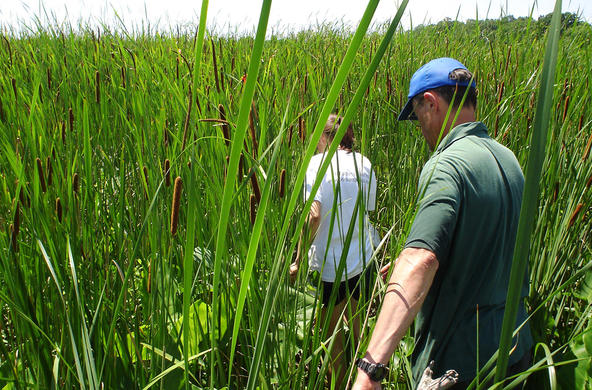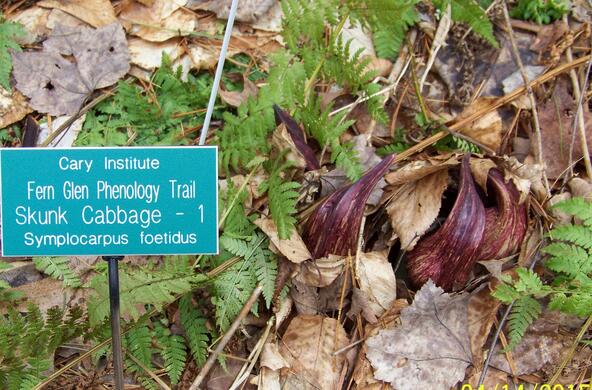Objectives
Students will know that mud worms at Foundry Cove evolved cadmium resistance and be able to explain how the scientists verified that cadmium-resistance is an inherited trait.
Overview
Rating:
1. Students design, describe, and sketch an experiment to show whether worms from Foundry Cove are more able to survive high cadmium environments than worms from a control area (South Cove).
2. Students sketch experimental setups, analyze graphs, and explain results of two scientific studies conducted on Foundry Cove worms.
Materials
- Student handouts for Lesson 4, “Survivors at Foundry Cove Worksheet”
- PowerPoint presentation “Survivors at Foundry Cove” and “Survivors PPT Notes for Teachers”
Procedure
Engage
- Ask students if they or anyone they know has had to take a second antibiotic because the first one the doctor prescribed didn’t work. Or, whether they’ve heard that you are always supposed to take all of your antibiotic. Ask them to explain: Why?
- If they had to take a second antibiotic, it is likely that the problem was a drug-resistant bacteria. Many harmful bacteria have evolved resistance to penicillin and other common antibiotics through natural selection. Bacteria that are not killed by a particular antibiotic have some resistance to it and the resistance is passed down to bacterial daughter cells. This happens particularly when patients do not finish a course of antibiotics, killing the most susceptible bacteria but leaving the most resistant ones to reproduce. So-called “superbugs” have evolved this way, causing the deaths of thousands of people in the U.S. alone, from elderly hospital patients to high school athletes. MRSA (methicillin-resistant Stapholoccocus aereus) is a well-known example that was in the news several years ago.
Explore
- Show the PowerPoint “Survivors at Foundry Cove” and pause at slide #5, which asks: “Are L. hoffmeisteri worms usually resistant to cadmium? What kind of experiment could be done to find out?” Discuss these questions with students and then have them complete the first two pages of their student handouts.
- Return to the PowerPoint, and have students explain the results shown in Graph A.
- Discuss plastic traits versus inherited resistance (described in slide #8).

- The final slide (#10) presents study results that showed the cadmium resistance in the worms was inherited. To help students understand this graph, you may want to ask questions such as these:
- How would you describe the survival of Foundry Cove worms when grown in sediments containing varying levels of cadmium?
- How would you describe the survival of South Cove worms?
- How do the results for these two groups of worms correspond to the findings shown in Graph A?
- How would you describe the survival of the offspring of the Foundry Cove worms compared to worms obtained from Foundry Cove or South Cove?
As students answer questions, have them justify their answers using Graphs A or B.

Explain
Scientists conducted several experiments to learn about the cadmium-resistance in Foundry Cove worms. An early experiment showed that the population of Limnodrilus hoffmeisteri living in Foundry Cove was unique in its ability to survive in cadmium-polluted environments (Graph A). Control area (South Cove) sediments used for this experiment had a cadmium level of 19 ppm and Foundry Cove sediments used had a cadmium level of 50,000 ppm.
Almost all worms from both coves survived for 28 days in sediments from the control area. In contrast, when worms from both coves were kept in Foundry Cove sediments, nearly all control area worms died, while 90% of the Foundry Cove worms lived. Foundry Cove worms survived well in sediment from either location, but almost all worms from the control area died in the Foundry Cove sediment.
Scientists wanted to find out if the cadmium resistance was a result of a plastic trait or a fixed trait. A plastic trait may already be fairly common in the population but is only now being observed due to change in the environment (toxicity), and thus the population can in effect “turn off” or “turn on” the resistance. Phenotypic plasticity means that the trait can vary in its expression depending on environmental conditions. A fixed trait is also genetic, and can also become more common as a result of natural selection, but is always present in the population. Natural selection occurs when selective pressure on a population increases the likelihood that resistant individuals will survive, reproduce, and pass their genetic resistance to offspring. When research revealed that the offspring of Foundry Cove worms were nearly as resistant to cadmium as their parents (Graph B), it became clear that cadmium-resistance was inherited due to plasticity. (FC = Foundry Cove; SC = south Cove)

Worms from Foundry Cove and South Cove were field collected, meaning they grew to maturity in their natural habitats. The offspring were the second generation young of field collected Foundry Cove parents.
In sediments with 0 mg/g cadmium, survival rates for all groups were high. At 20 mg/g, survival of FC worms and their offspring is similar, while very few SC worms survive. At 30 mg/g, survival of offspring drops more than that of FC worms, but is still much higher than SC worms. At 45 mg/g and above, no SC worms survive the 28 days, while even at 90 mg/g, a small percentage of the FC worms and the FC offspring still survive. This experiment showed that cadmium resistance in the population of worms in FC was indeed genetic, since it was inherited by the offspring. Though resistance was less pronounced in the offspring than in the adults, it is clearly inherited, and the trait was already in the population: within about 4 generations, a population of non-resistant L. hoffmeisteri grown in a cadmium-contaminated environment evolved cadmium-resistance. Therefore, there was plasticity within what scientists thought were non-resistant worms, showing that their population did indeed have a trait to allow them to become resistant to cadmium over time. This is different from an individual acquiring the trait or becoming more resistant over time, which is often what students want to believe.
By analyzing gut contents of Foundry Cove worms, scientists discovered that resistant worms had more cadmium, not less, in their bodies. Scientists concluded that at least some of the cadmium in Foundry Cove was bioavailable and was absorbed by body tissues in the form of a metal-binding protein and metal-rich granules in worm tissues. Biomagnification led to high cadmium levels in blue crabs and grass shrimp, among other organisms.
Extend
1. To help students understand trait plasticity, they can collect and measure leaves from the north and south faces of a tree, or if the tree is at the edge of a forest, the side facing the edge and the side that gets shaded by nearby trees. The same individual will tend to make larger leaves on the sunnier side—either the south-facing slope, or the side that isn’t inhibited by shading from other trees. This is an example of a phenotypically plastic trait.
2. Further, students with strong reading skills can read one or both of these articles about biomagnification and trophic transfer, “Animal Feeding and Metal Uptake and Bioconcentration” and “Uptake by Species Higher in the Food Web”. Both are found on an extensive Foundry Cove web site based at Stony Brook University. Go to https://you.stonybrook.edu/marinebio/foundry/# and press "contents"
Evaluate
Questions 8-10 on the student worksheet can be used as a formative assessment of student understanding of the genetic basis for the inheritance of resistance.
Resources
Lesson Files
pdf
Survivors! PowerPoint
pdf
PowerPoint Teacher Notes
pdf
Student Worksheet
Standards
Benchmarks for Science Literacy
1B Scientific Inquiry, 5A Diversity of Life, 5B Heredity, 5E Flow of Matter and Energy, 12E Critical-Response SkillsNYS Standards
MST 1 - Mathematical analysis, scientific inquiry, and engineering design, MST 3- Mathematics in real-world settings, MST 4- Physical setting, living environment and nature of science, MST 5- Engineering and computer technology to satisfy societal needs, MST 6- Interconnectedness of mathematics, science, and technology (modeling, systems, scale, change, equilibrium, optimization)Credits
Celia Cuomo, Cary Institute.







































































